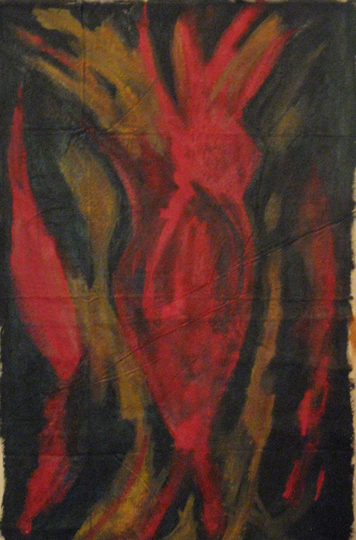Hestia
 Hestia, Greek Goddess of the sacred fire, was once known as "Chief of the Goddesses" and "Hestia, First and Last". She was the most influential and widely revered of the Greek goddesses. For surely it is from Fire that we originated and by which in the end, we will be consumed.
Hestia, Greek Goddess of the sacred fire, was once known as "Chief of the Goddesses" and "Hestia, First and Last". She was the most influential and widely revered of the Greek goddesses. For surely it is from Fire that we originated and by which in the end, we will be consumed.
Though the goddess Hestia was once the most important of the Greek goddesses, she is virtually unknown today. Scholars often refer to Hestia as "the forgotten goddess." She was, and is, the goddess of the hearth fire; in fact, she is envisioned as the fire itself. Her name means "the essence," the true nature of things. Unlike the other Greek goddesses, Hestia does not have a "story" . . . there were few adventures to record about her. She simply "is".
Few images of the goddess Hestia exist. A very "private person", her symbols, the sacred flame and the circle, are usually used to represent Hestia in works of art.
In Greek mythology, virginal Hestia, daughter of Cronus and Rhea, is the goddess of the hearth, of the right ordering of domesticity and the family, who received the first offering at every sacrifice in the household. In the public domain, the hearth of the prytaneum functioned as her official sanctuary. With the establishment of a new colony, flame from Hestia's public hearth would be carried to the new settlement.
As the “hearth, Hestia is immovable and unable to take part even in the procession of the gods, let alone the other antics of the Olympians. This nature is illustrated by her giving up her seat in the Olympian twelve to prevent conflict. (imagine if “Fire” were to be sitting there!) But closer analysis shows strong hints that Hestia was a religious force of tremendous and ancient import. She is considered to be the first-born of Rhea and Cronus; this is evidenced by the fact that in Greek (and later Roman) culture ritual offerings to all gods began with a small offering to Hestia; the phrase "Hestia comes first" from ancient Greek culture denotes this.
Immediately after their birth, Cronus swallowed Hestia and her siblings except for the last and youngest, Zeus, who later rescued them and led them in a war against Cronus and the other Titens. Hestia, the eldest daughter "became their youngest child, since she was the first to be devoured by their father and the last to be yielded up again." "She was the first-born child of wily Cronos — and youngest too."
Hestia is also known as the originator of the concept of “sanctuary”. It was an offense to Hestia to refuse hospitality to a stranger. That those in need were to be sheltered and protected from ill-treatment was recognized by Hestia’s followers as a sacred obligation. To welcome one to the "fire" - to enter and be warmed, certainly denotes refuge and sanctuary.
"Hestia, in the high dwellings of all, both deathless gods and men who walk on earth, you have gained an everlasting abode and highest honor: glorious is your portion and your right. For without you mortals hold no banquet, where one does not duly pour sweet wine in offering to Hestia both first and last." Homeric Hymn to Hestia
In a fascinating online article about Hestia in which she compares the goddess to the Tarot trump the Chariot, Iona Miller says:
"Like Fire, the goddess of [the] deep center or introversion is Hestia. She helps us find that quiet state of consciousness which characterizes contemplation and meditation. ...Hestia helps us lead a balanced life by providing a sense of center. The holy precinct makes communication with the divine forces possible."
Hestia symbolizes the fire of mana, originating in the center of the earth, and traveling upward through the chakras to meet the fire of the Goddess and blend with it. There is a wonderful description of this power in a book on Celtic shamanism, Fire In The Head:
The net of divine power...is similar to the divine power the Polynesians call mana, the Algonquin manitou, the Lakota wakanda, the Iroqouis orneda, the Pawnee tirawa, and the !Kung ntum. It is very much the same idea expressed as brahman in India and the tao in China and Japan. In the European esoteric tradition, it is often called magick. It is the Goddess-without Form, the great spirit or wondrous mystery behind all that is and, in fact, it is All-that-Is.
Hestia can be seen as the Guardian of Below, Fire in the Earth and also as the power of the Guardian of Above, the Heaven Shiner. Hestia thus represents the power of the vertical, a concept which is recognized in honoring not only the Four Elements, but also the Above, Below, and the Center, which is each one of us.
Picture of Hestia by Deanne Quarrie